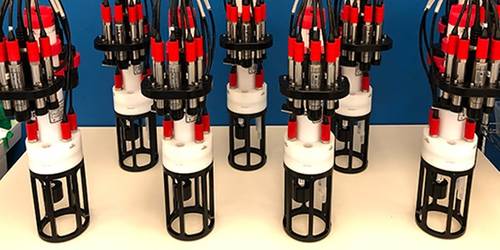RBR Order to Support Great Lakes RAEON
Scientists have started a coordinated effort to study and monitor the health of the Great Lakes using a large number of RBR loggers and multiparameter sensors.
RBR has recently delivered hundreds of world-class scientific instruments to meet the critical requirements of the Real-time Aquatic Ecosystem Observation Network (RAEON).
“RAEON will support comprehensive and multidisciplinary research to understand and manage the Great Lakes and will be a reference for researchers worldwide who are investigating freshwater ecosystems,” Dr. Fisk said.
“This collaborative hub will enable researchers to join forces in understanding our freshwater ecosystems,” said Roseann O’Reilly Runte, president and CEO of the CFI. “RAEON’s state-of-the-art infrastructure will push the boundaries of aquatic research and technology development, reinforcing Canada’s position as a leader in environmental stewardship and a global destination for service and innovation.”
Four hundred RBRsolo³ T loggers (internally recording and powered temperature instruments) will be used in conjunction with acoustic telemetry arrays in Lake Ontario for the long-term monitoring of how the temperature in the lake changes over annual and inter-annual time scales.
Based on work published in Geophysical Research Letters, the high accuracy of the RBRsolo³ T temperature measurement is required to measure and resolve the small changes in the vertical structure of lake temperature that drive seasonal circulation and track long-term changes.
Over 20 RBRmaestro³ CTD multiparameter data loggers were delivered to identify the baseline health of the Great Lakes. The loggers will be used to measure a variety of key environmental factors, such as temperature, salinity, depth, pH, turbidity, dissolved oxygen, carbon dioxide, and multiple wavelengths of fluorescence.
The combination of these sensors on one logger enables the researchers to measure all parameters on the same time scale, which is important to get a baseline water quality level of the lakes for long-term lake monitoring.
The RBRmaestro³ CTDs will be used for both vertical profiling studies on small research boats as well as moored for long-term inter-annual studies. The moored loggers were configured with integrated wipers to keep the multiple optical sensors clean of biofouling during the long studies.













 December 2025
December 2025



